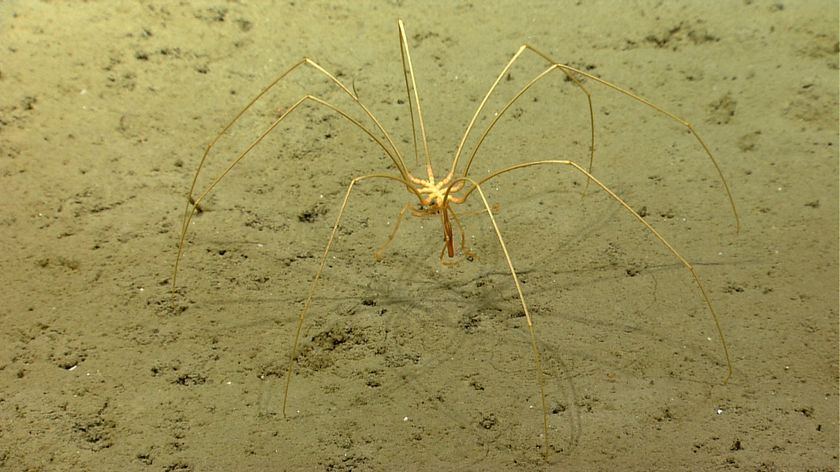Oldest Known Spider Web Discovered in Amber
A spider's orb web is one of the most impressive architectural feats in nature, capturing morning dew and insect meals with equal grace.
But webbing rarely stands the test of time, especially over millions of years, and researchers have few samples of ancient web to study.
Now, scientists have found 136-million-year-old piece of amber encasing pieces of web and trapped insects that helps fill in the gaps of the origin of orb webs. The finding also indicates predatory spiders likely played a role in the evolution of flying insects.
The study is detailed in the June 23 issue of the journal Science.
Ancient amber
The hunk of amber, which was collected in Spain, contains 26 web strands with a mite, a wasp leg, and a beetle stuck to some of the thread by visible droplets of web "glue." Although these insects are extinct, their size and diversity match the type of prey caught in modern webs.
"The advanced structure of this fossilized web, along with the type of prey that the web caught, indicates that spiders have been fishing insects from the air for a very long time," said study co-author David Grimaldi of the American Museum of Natural History in New York.
Sign up for the Live Science daily newsletter now
Get the world’s most fascinating discoveries delivered straight to your inbox.
The amber is the oldest known example of a web with trapped insects. Although only few pieces of the web remain, the arrangement of the preserved bits strongly suggests an orb web design.
Driving diversity
The orientation of the web indicates that it was strung between objects and hung in the air. The emergence of hanging spider webs might have influenced the evolution of flying insects.
For example, Grimaldi said, members of the family Lepidoptera, which includes moths and butterflies, are covered in scales that allow them to tumble out of sticky webs.
"And it happens that Lepidoptera evolved around the same time that spiders produced these webs," Grimaldi told LiveScience.
The types of insects caught in the fossilized web are important pollinators today, and may have been darting from flowering plant to flowering plant when they were captured by the web. Agile, powerful fliers with good vision, such as bees, would also stand a better chance of avoiding webs, much as they do today. Small, weak flies or less nimble fliers would have been, and still are, more commonly ensnared.
How webs work
The finding sets the minimum age for the common ancestor of the two groups of spiders that weave orb webs, Araneoidea and Deinopoidea.
Because the two groups use different tricks to snag prey--Deinopoids create a Velcro-like surface to catch insects while Araneoids cover their webbing with a sticky "glue" substance--scientists had long believed the orb web design was an example of convergent evolution, a process in which two organisms develop remarkably similar traits.
Along with the age of the amber fossil, genetic analysis of the two spider families, detailed in another paper in the same issue of Science, indicates a common origin for orb web design.
The protein building blocks that make up spider silk are of interest to other scientists and industry because of their remarkable strength, stretchiness, and toughness. Potential applications include better bandages, bulletproof fibers, aerospace tethers, and nets.
- Image Gallery: Creepy Spiders
- The Real Spider-Man
- First Flowers Triggered Boom in Ant Diversity
- Gene Sequence for Super Spider Silk Discovered
- Why Spiders Don't Do the Twist
- Scientists Find More Assassin Spiders












